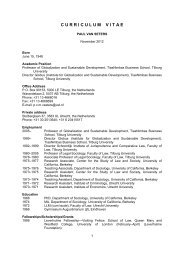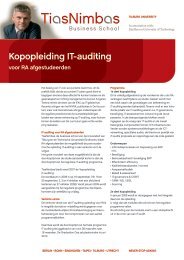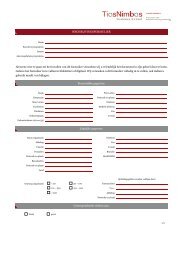Financial Responsibility, Personality Traits and Financial Decision ...
Financial Responsibility, Personality Traits and Financial Decision ...
Financial Responsibility, Personality Traits and Financial Decision ...
You also want an ePaper? Increase the reach of your titles
YUMPU automatically turns print PDFs into web optimized ePapers that Google loves.
striking are the low scores that we find for some of these questions even for those who<br />
labeled themselves as savers. For instance, only 51.06 percent of savers have in fact<br />
earned more than they spent. Only 33.75 percent of savers have saved enough to last<br />
a year without income. These levels are still low, when considering that earning more<br />
than spending is a condition to even save at all. In section B of table 3, we construct<br />
a savings score based on this set of four questions. This shows that 9.89 percent of self<br />
reported savers in fact did not earn more than they spend, they did not save enough to<br />
last a year, nor did they save for retirement, nor read their pension statement. Their<br />
savings score equals zero, which makes it difficult to underst<strong>and</strong> why they consider<br />
themselves as savers in the first place. The natural conclusion is that they believe<br />
the government is saving on their behalf as a society for their futures in the form of<br />
retirement provision <strong>and</strong> social security. When accumulating scores 3 <strong>and</strong> 4, we find<br />
that 39.04 percent of the savers group actually score high, compared to the 33.67 percent<br />
of spenders <strong>and</strong> 35.49 percent for the total sample. In the remainder of our analysis we<br />
will distinguish between self-reported savers, based on how respondents consider their<br />
own ability, versus observed savers, based on this 35.49 percent that actually scores<br />
high on our four saving behavior questions.<br />
Table 4— Logit regressions on self-reported savers<br />
To underst<strong>and</strong> which factors trigger the knowledge <strong>and</strong> use of saving behavior across<br />
our set of respondents we run stepwise Logit regressions. First, we analyze the self-<br />
reported saving perception (underst<strong>and</strong>ing), in which savers is a binary dummy with<br />
value one if respondents have indicated to be very willing to sacrifice immediate well-<br />
being to achieve future success. We explain the variation in this dummy variable using<br />
an extended model, in which we first include a set of demographics, which we then<br />
15













